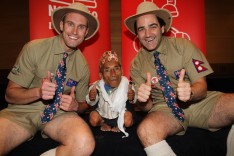The art of the radio stunt
 From prank calls to song parodies, can a radio stunt drive a station’s ratings? Colin Delaney speaks to radio’s pranksters to find out.
From prank calls to song parodies, can a radio stunt drive a station’s ratings? Colin Delaney speaks to radio’s pranksters to find out.
Crushing cars for cash, breaking world records and eating the inedible.
The aim of a good radio stunt is not only to entertain listeners, but to “create awareness and get talkability,” says Sydney radio station WSFM’s Brendan ‘Jonesy’ Jones.
In other words, to generate some free publicity.

